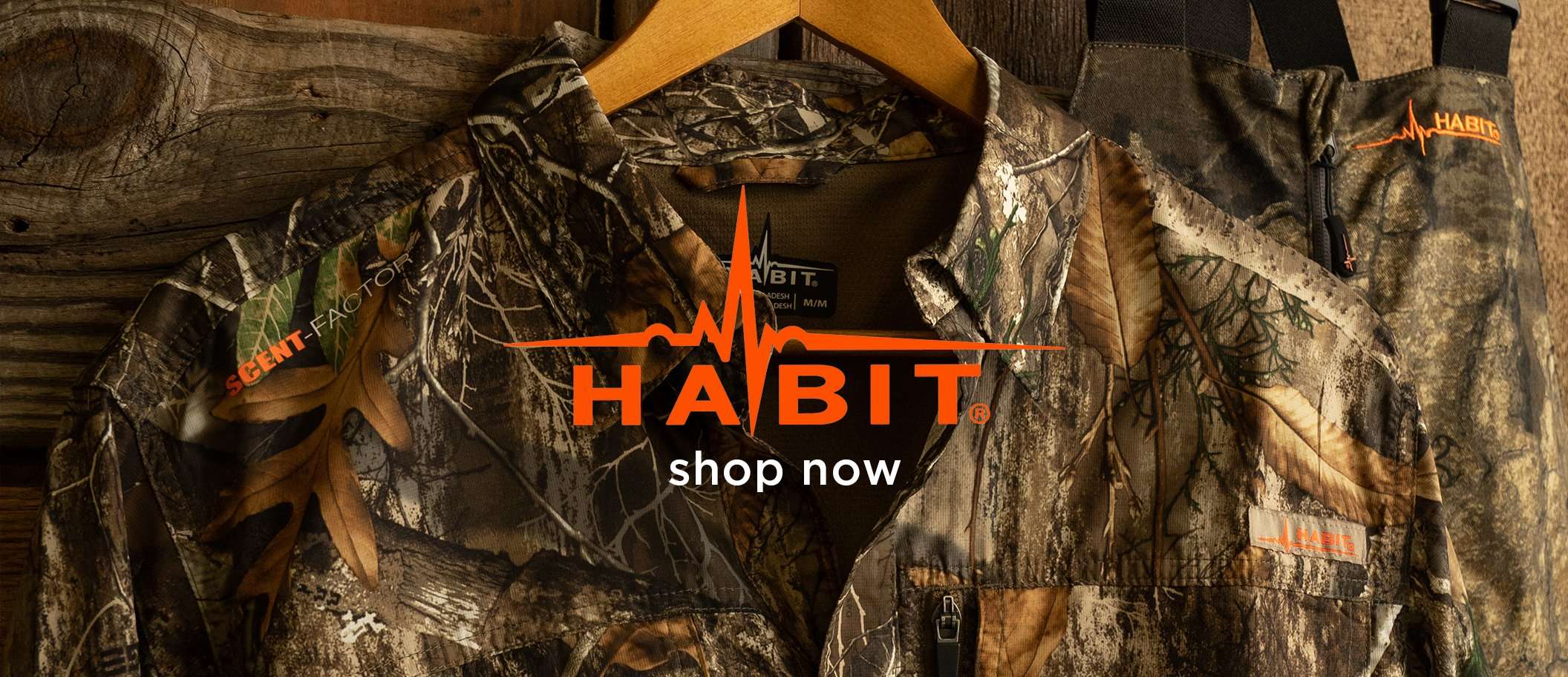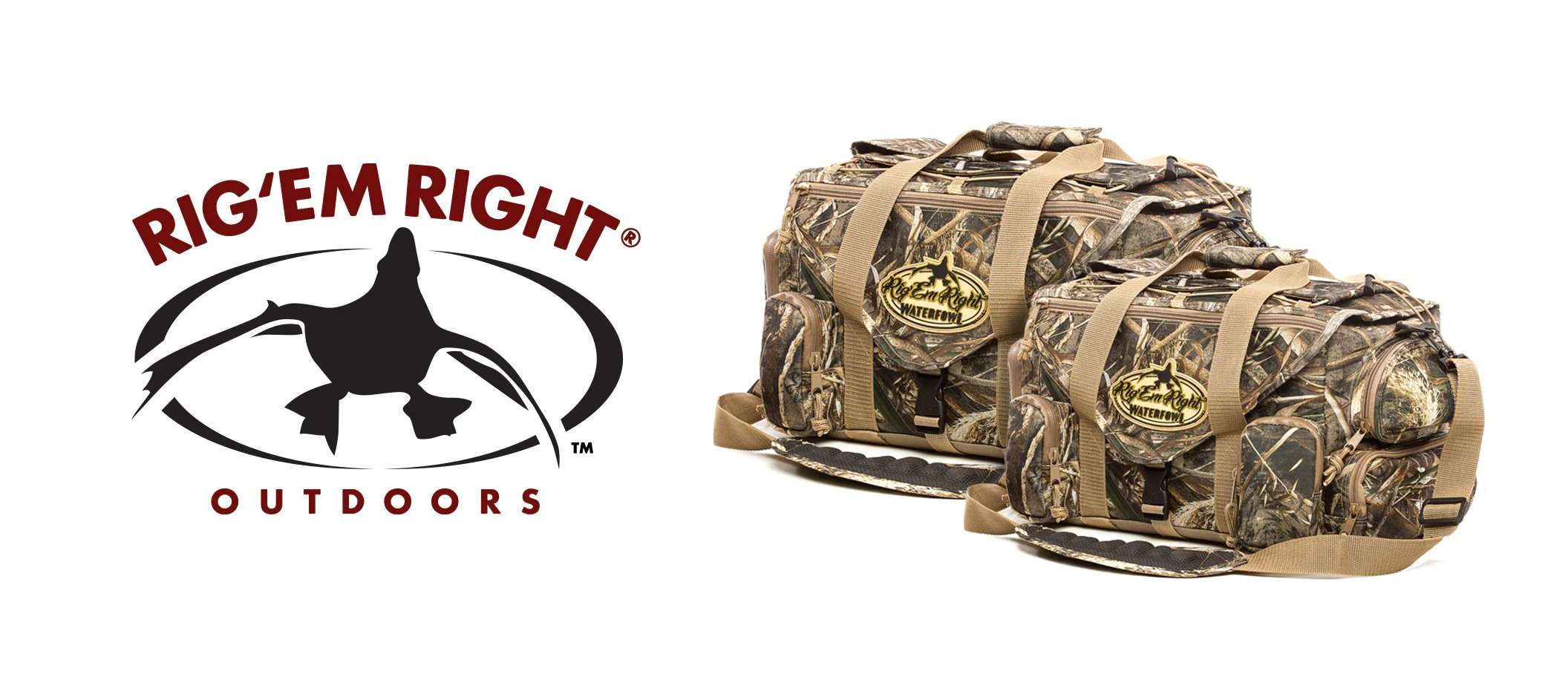Autumn longbeards might seem tough compared to their spring counterparts, but the time-tested tactics from these experts can put you on fall beards and spurs
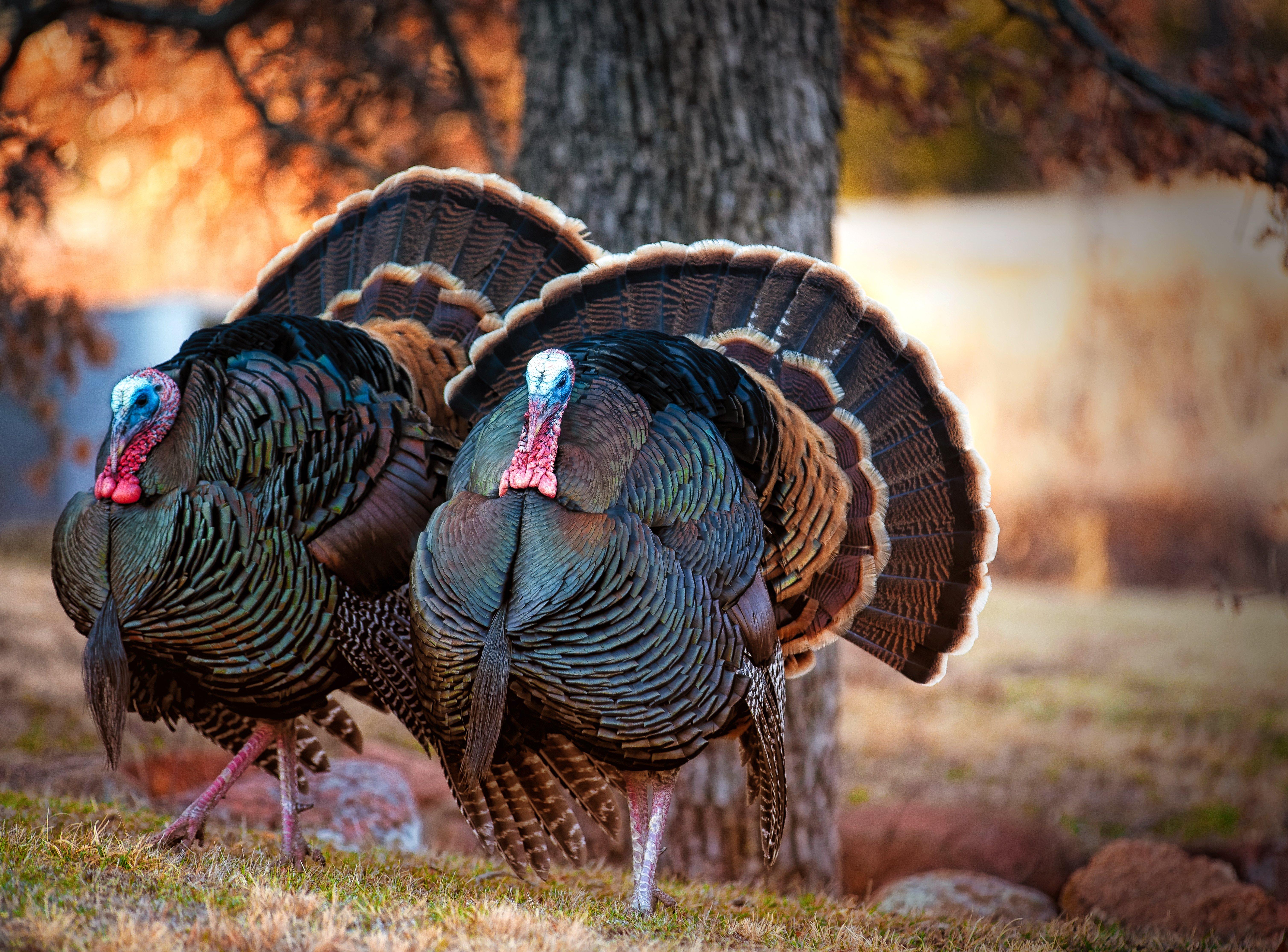
Wait — fall gobblers strutting, gobbling and coming to a call? It can happen if you use the right approach. Photo by David Scott Dodd
Spring thunder seems to fade during summer, so fall turkeys don’t spark much interest from many folks. But a few die-hard nuts know a secret: The challenge of hunting a big longbeard burns just as brightly in autumn.
That might seem to contradict tradition, as fall turkey hunting has long been an equal-opportunity endeavor, with hunters typically targeting birds of either gender and any age. With declining turkey numbers in many areas, however, shooting hens and jennies has fallen out of vogue in some circles, perhaps nudging folks to a male-turkey-only autumn approach.
That prompts the question about how to focus on male turkeys in fall, as they act far differently than their spring counterparts. Veteran hunters say the keys are understanding what type of turkey you’re hunting and knowing how to talk to it.
JAKES
Young-of-the-year male turkeys break away from family groups and mixed flocks in late winter, but during most autumn seasons, they’re still with their brood hens and female siblings. And although young turkeys of either gender seemingly behave in similar fashion, young males are constantly changing, so hunters must adapt.
“When we encounter a family flock made up of adult hens, jenny hens [juvenile females] and young-of-the-year gobblers, we handle them differently depending on whether it’s early in the season or late,” said Marlin Watkins, a call maker and veteran fall turkey hunter from Ohio. “Early on, mama does all the work assembling the group. You can have young birds lost-calling in every direction, but when mama starts that alarm-clock assembly yelping, the entire group shuts up, and everyone runs to her.”
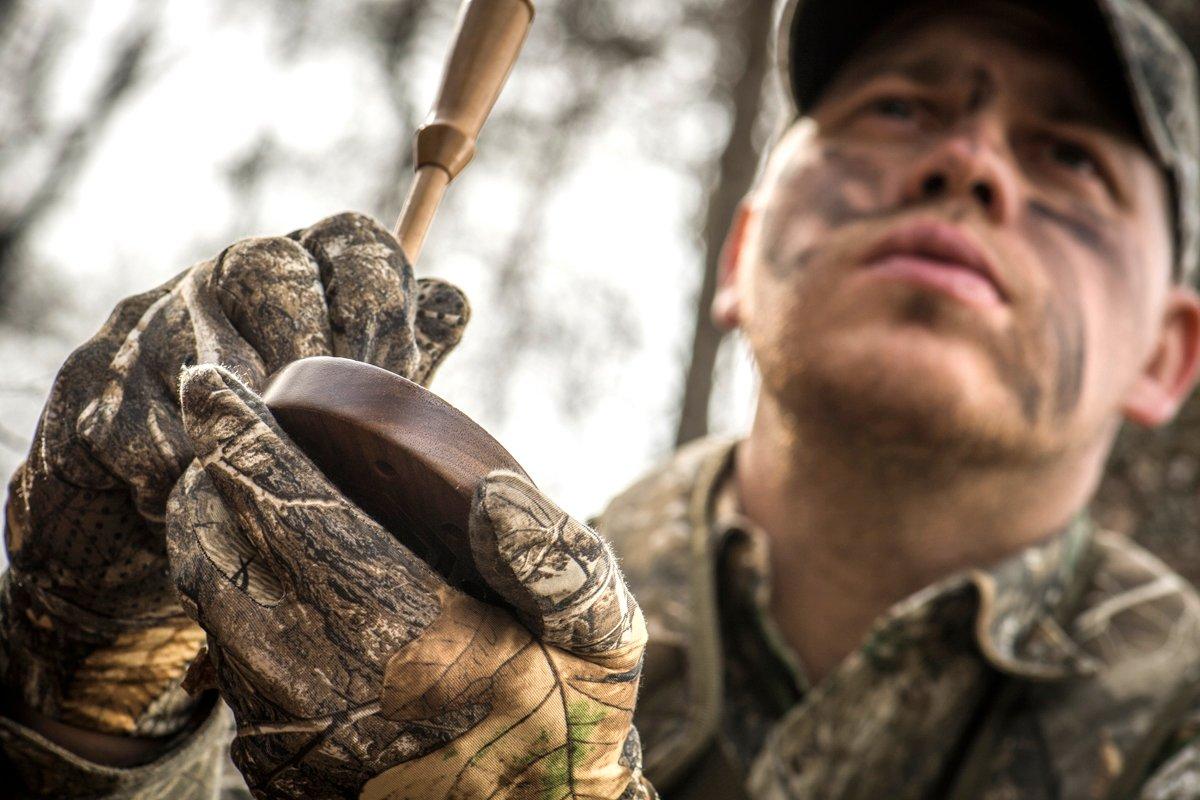
In fall, call like the turkey you’re hunting. Use jake kee-kees, jake yelping and jake clucking for young birds, and gobbler yelps, gobbler clucks and gobbling for older gobblers. Photo by Bill Konway
Watkins runs turkey dogs to locate birds and break up flocks. (You can also scatter birds when hunting without dogs.) When they scatter a family group, he and his companions wait about 30 to 45 minutes before calling to reassemble the birds, starting with a boat-paddle-style long box, trying to sound like a lost jenny. Usually, that involves two or three kee-kee notes followed by soft, high-pitched yelping. When they hear a young turkey whistling, they focus on determining its gender.
“Most often, it will be a young-of-the-year gobbler,” he said. “He is not generally going to come to a jenny hen. We then immediately switch to a kee-kee followed by jake yelping and clucking. As these birds get closer to each other, they usually make their final move to come together by clucking, and we do the same. This is true with all genders but particularly so with gobblers of all ages.”
As the season progresses, Watkins said, jakes become like obnoxious boys, making a “horrible racket” after being scattered. He adjusts his calling strategy.
“They seem to attract all the attention and become the center point of the reassembly,” he said. “Later in the season, we sometimes use a box call and focus on the young gobblers by gobbler yelping and jake gobbling. At this time of year, it seems to attract all genders but particularly the young gobblers.”
Don’t Miss: Advanced Turkey Talk
THE IN-BETWEENERS
Male turkeys going into their second spring — often called jake-and-a-halfs — typically roam in bachelor groups during fall. As you’d expect, they’re more abundant than mature gobblers and often more vocal. Also, they’re often more willing than old gobblers to reassemble after being scattered.
“These birds can be crazy,” Watkins said. “There’s nothing more fun than a hunt when you may hear 300 gobbles in an hour and get to carry Thanksgiving dinner out of the woods.”
After his dogs break up a flock, Watkins checks nearby scratching to determine the group’s composition. If he only finds gobbler scratching — large scratching marks, often near the bases of trees — he knows he’s scattered a gobbler group, but he can’t be sure of their age until the hunt progresses.
“Again, we wait many times up to an hour,” he said. “Then we start our gobbler yelping and clucking. With jake-and-a-halfs, the action usually starts much sooner, and there’s generally a lot more gobbling. This is usually our key to what we are dealing with. Sometimes, these birds will be gobbling in all directions, and we try to match them note for note.”
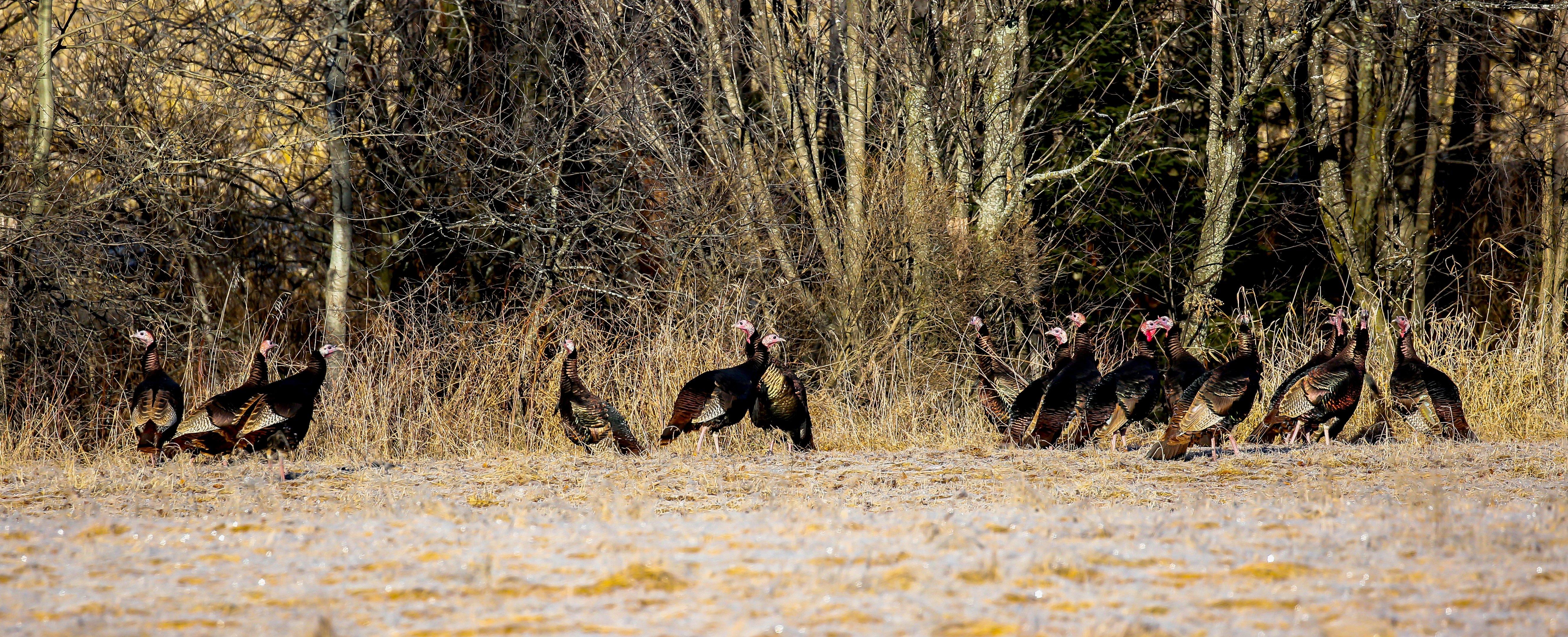
Jake-and-a-halfs provide great opportunities for autumn turkey hunters, and they can be extremely vocal. Photo by Michael Tatman.
Jake-and-a-halfs might come in quickly, so hunters should be set up and prepared to take the turkey the instant it pops into view.
“When he walks over the rise, you can do one of two things: You can take his picture, or you can shoot him, but you can’t do both,” Watkins said. “He expects to see one of his brothers right where that sound came from. If he doesn’t, he will be gone in seconds.”
When blind-calling to attract or locate fall gobblers — especially jake-and-a-halfs — vocalizations associated with dominance can spark a sharp reaction. Even during fall, gobblers are sorting through their social hierarchy.
“I have a good friend who has good luck with fighting purrs in the fall, pulling the whole group or scattered singles,” said Tad Brown, a legendary call designer and veteran fall turkey hunter from Missouri. “And fighting purrs seem pretty successful on those spring jakes going into their second fall. They are constantly trying to establish dominance.”
Brown also gobbles, whether on a box or tube call.
“If you get lucky enough to get a flock of gobblers or jakes scattered, gobbling is amazingly successful,” he said. “I have had them come in strutting and gobbling just like during spring, especially if they’ve spent the night alone.”
Don’t Miss: Great Wild Turkey Recipes
BIG BOYS
Mature gobblers are rightfully considered the toughest fall turkeys. They’re often not vocal, and when scattered, they might not show any urgency to regroup with their buddies. However, a thoughtful approach can get you in the game.
“There are no guarantees with mature gobblers,” Watkins said. “It can be the most hair-raising hunt you have ever been on. It can be one cluck, and there he stands. Or you can scratch your head all evening wondering what happened.”
Often, that depends on the situation.
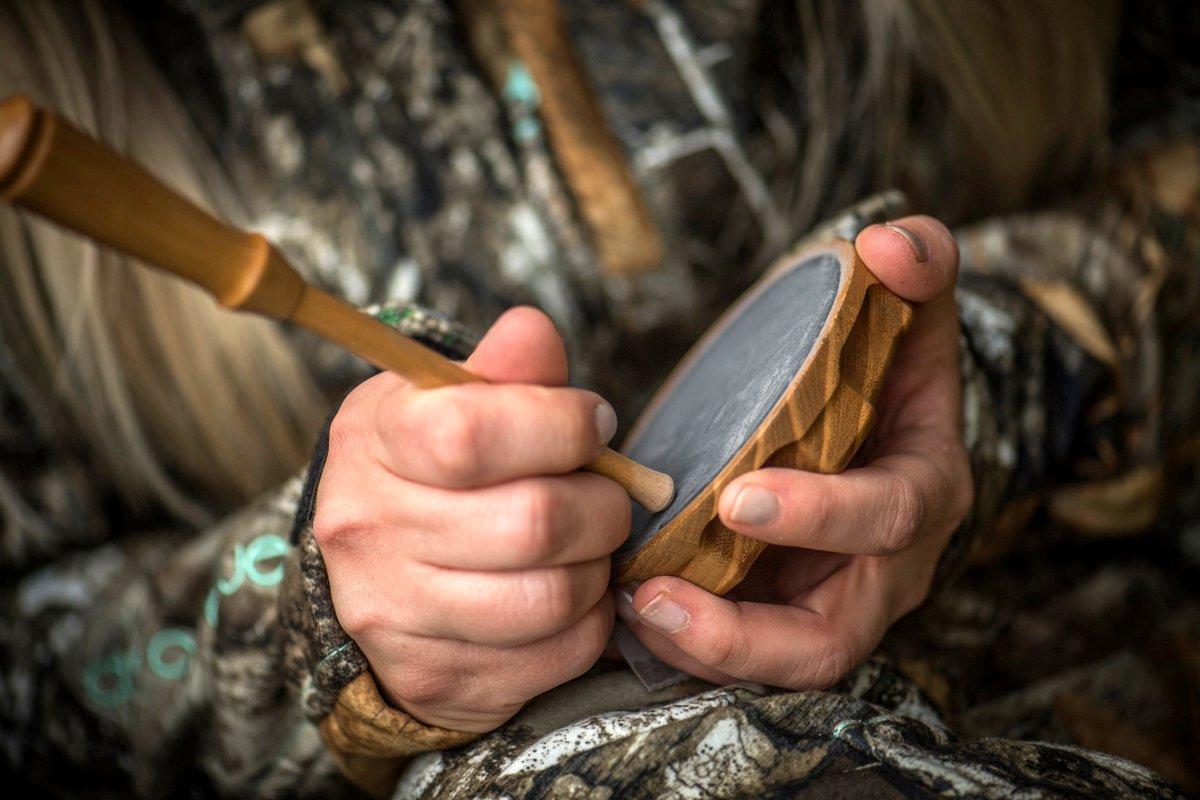
Most veteran fall hunters wait about an hour before calling to a scattered flock. Photo by Bill Konway
“Over the years, I’ve found some gobblers that came to call and reassembled very aggressively, and other groups that you sat on for hours and never heard a sound or saw a bird,” Watkins said. “I often thought it had to do with where you broke them. If it was a year when food was extremely abundant or extremely scarce, these birds might not travel more than a few hundred yards all day. When you break one of these flocks, they have no sense of urgency to reassemble. They all know where the roost is. They are mature birds and they don’t really care if they get together today or on Thursday. However, if you find a flock that’s moving from one area to another, all things change. That group wants to get back together and get on with whatever it was they were doing.”
When Watkins’ dogs scatter a gobbler group, he and his buddies will set up near the break point on high ground and begin calling after an hour.
“We usually use a deeper box call and slow our yelping down to gobbler yelping,” he said. “We also sometimes just stick with clucking, waiting to see if we get a response. I’ve also made good use of a trumpet call or a slate call to produce the same gobbler yelping and clucking. The real reason our preferred call is a box is because we can also gobble on the box call. As the time passes, we start gobbling, possibly each time we call, which might be every 15 minutes or so until we get a response, and then we try and match their calling note to note. As the time passes, these birds become angrier, and their gobbling intensifies. You can hear the anger in the gobble. And again, if we get a bird moving toward us, we generally start clucking, which is the method of all turkeys for final assembly.”
If Watkins scatters a gobbler group during the afternoon but doesn’t receive a response by dark, he often returns early the next morning and can experience quick success. Larry Proffitt, a veteran Tennessee turkey man, only hunts gobblers in fall and doesn’t use dogs. Instead, he takes a patient, measured solo approach.
“Assuming I have found gobblers, I will build a good hide, as Dwain Bland would say, where I can wait all day on an old gobbler if he has replied to any of my calling,” he said. “I prefer that the approaching gobbler can’t see me until he is in range, all depending on the situation.”
When blind-calling, Proffitt relies on a Ralph Permar gobbler trumpet and a Roger Parks gobbler slate.
“I start with a single jake gobble,” he said. “I don’t believe old gobblers are scared very badly by one jake. However, we have all seen a drove of jakes put longbeards on the run. In 15 minutes by my Timex, I gobbler yelp three or four times with the Permar. I plan to stay there all day if there are gobblers thereabouts. I might also lost-call a little with the gobbler slate.”
When the right situation arises, Proffitt might also use a seemingly offbeat tactic: a solo scatter.
“I’ve been covering ground trying to find gobbler sign a few times and had to scatter them,” he said. “I empty my gun over their heads and hope for a good bust. If they split, I immediately go in the direction they went and build a good hide.”
He then begins calling by making jake kee-kee runs on a Zach Farmer trumpet. Then, he’ll jake-gobble on a mouth call and back it up with jake “kawking” (yelping). After waiting a bit, he’ll repeat the series. When a gobbler answers, however, he’ll reply with the same vocalizations.
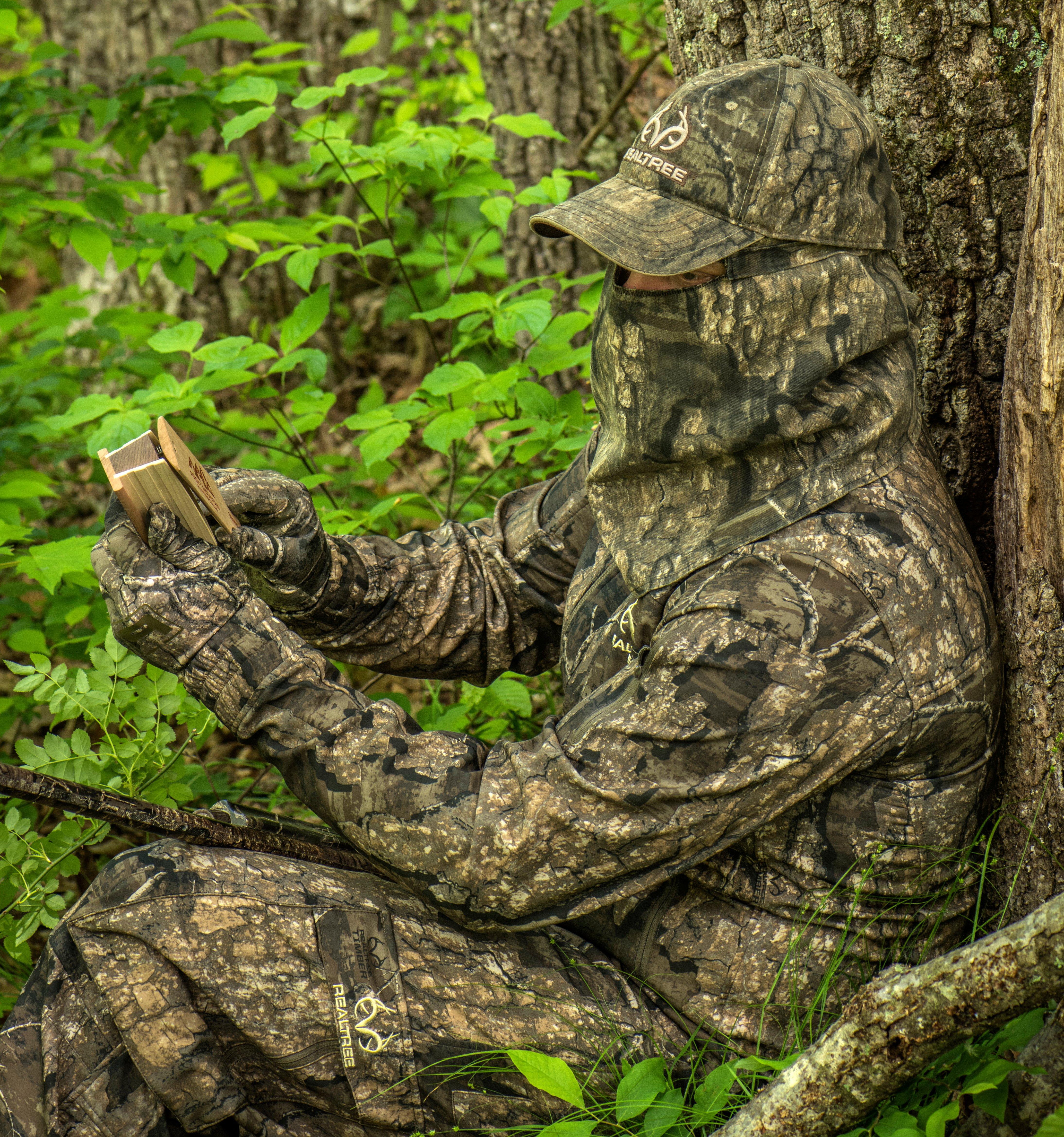
Box calls are extremely versatile for fall hunting, as they can produce kee-kees, gobbler yelps and even gobbles. Photo by Bill Konway.
FALL DREAMS
As you might infer, fall gobbler hunting is a game unto itself — similar to, yet starkly different than, familiar spring hunts, with a variety of potential tactics. And that might be the ultimate lesson for the autumn gobbler game: keeping an open mind. “Many fall hunters have their own way of killing old gobblers,” Proffitt said. “If it works, don’t try to fix it.”
Don’t Miss: Where Do Winter Turkey Flocks Go?




